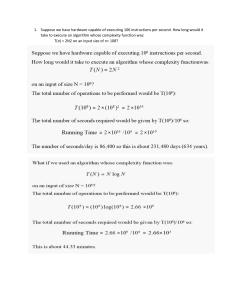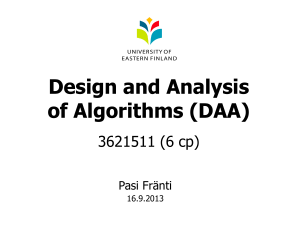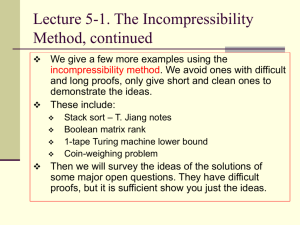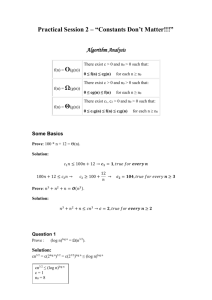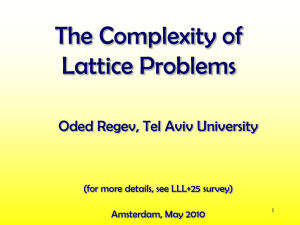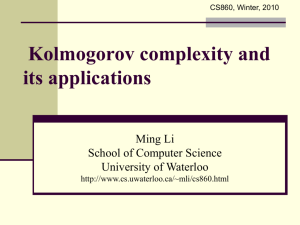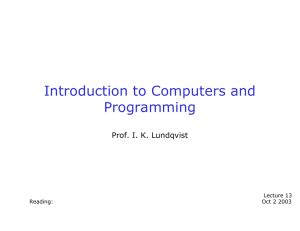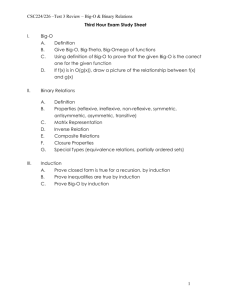ppt:Li
advertisement
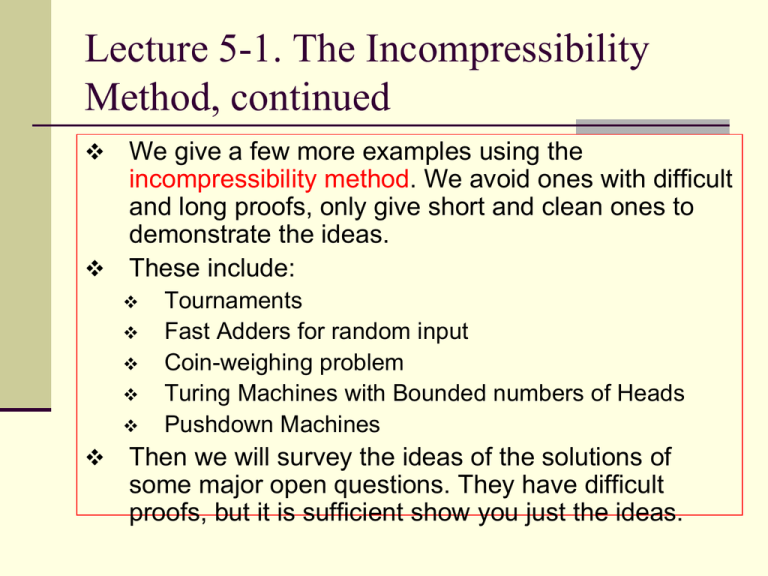
Lecture 5-1. The Incompressibility
Method, continued
We give a few more examples using the
incompressibility method. We avoid ones with difficult
and long proofs, only give short and clean ones to
demonstrate the ideas.
These include:
Tournaments
Fast Adders for random input
Coin-weighing problem
Turing Machines with Bounded numbers of Heads
Pushdown Machines
Then we will survey the ideas of the solutions of
some major open questions. They have difficult
proofs, but it is sufficient show you just the ideas.
Fast adder
Example. Fast addition on average.
Ripple-carry adder: n steps adding n-bit numbers.
Carry-lookahead adder: 2 log n steps.
Burks-Goldstine-von Neumann (1946): logn expected steps.
S= xy; C= carry sequence;
while (C≠0) {
S= SC;
C= new carry sequence; }
Average case analysis: Fix x, take random y s.t. C(y|x)≥|y|
x = … u1 …
(Max such u is carry length)
y = … û1 …, û is complement of u
If |u| > log n, then C(y|x)<|y|. Average over all y, get logn. QED
Coin weighing problem
A family D={D1,D2, … , Dj} if subsets of N={1,...,n} is
called a distinguishing family for N, if for any two
distinct subsets M and M’ of N there exists an i
(1≤i≤j) s.t. |Di ∩ M| is different from |Di ∩ M’|.
Let f(n) denote the minimum of |D| over all
distinguishing families for N.
To determine f(n) is known as coin-weighting
problem.
Erdos, Renyi, Moser, Pippenger:
f(n)≥(2n/logn)[1+O(loglogn/logn)]
Combinatorics
Example There is a tournament (complete directed graph) T of n
players that contains no large transitive subtournaments (>1 + 2 log n).
Proof by Picture: Choose a random T.
One bit codes an edge. C(T) n(n-1)/2.
If there is a large transitive subtournament, then a large number of
edges are given for free!
C(T)< n(n - 1)/2 - subgraph-edges +overhead
T
Linearly ordered
subgraph.
Easy to describe
Theorem: f(n)≥(2n/logn)[1+O(loglogn/logn)]
Proof. Choose M such that
C(M|D) ≥ n.
Let di=|Di| and mi=|Di ∩ M|.
Value mi is within the range di / 2 O(di log i).
Therefore, given di, each mi can be described by its
discrepancy with di /2 , with gives
C(mi|Di)≤ ½ log di + O(loglog i)
≤ ½ log n + O(loglog n)
Since D is a distinguishing family for N, given D, the
values of m1, … , mj determine M. Hence
C(M|D)≤C(m1, … ,mj|D) ≤ i=1..j [½ logn+O(loglogn)]
This implies f(n)≥(2n/logn)[1+O(loglogn / logn)]. QED
